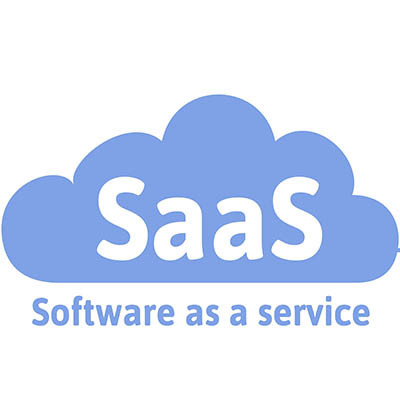Cambium Data Blog
How often have you been frustrated by the challenges of installing new software? How about expiring licenses or outdated tools that need to be upgraded frequently to prevent them from becoming obsolete? These are all problems associated with buying software licenses, and they can all be avoided through the smart use of Software as a Service.
By “renting” access to applications with a SaaS model, you can lay the foundation for a more efficient, secure, and scalable infrastructure, all while potentially setting yourself up to punch at a higher weight class than your SMB might have been capable of in the past.
If and when an employee departs from your business, they should go through a comprehensive offboarding process. This process should include the physical handoff of keys, laptops, and any other assets or resources they used during their employment with your business. While it’s easy enough to collect these physical items, it’s harder to shore up your business on the digital side of things.
We’re several years past the COVID pandemic at this point, and many companies are calling their remote workers back to the office. Still, there is merit in having a remote workforce, even if it’s not strictly “mandatory” or “necessary” any longer. Today, we want to share some tips to help your business thrive with a remote workforce and what you can do to optimize your odds of success with this work environment.
Let’s face facts… once you’ve spent enough time and money investing in your business, you’re going to want to see some return when the time comes for you to move along and let someone else take the reins. Whether that time is now or years away, there’s a critical element to keep in mind: any buyer won’t just be buying your business and its resources… they’re also buying any problems that come with it.
Therefore, instead of having your asking price suddenly chopped down when a potential buyer conducts their due diligence and discovers significant risks, investing in your IT now can generate significant returns when the time comes to divest from your company.
Do you find your computer filled with junkware and other types of software you don’t remember installing on your device? Even if you haven’t done anything wrong, you’ve probably made one mistake that has allowed junkware to accumulate. Today, we’re going to get into this mistake and the best way to avoid it: reading the fine print during any software installation.
Has your business implemented virtualization in any form? Chances are there is at least one part of your business that could benefit from a virtualization shift, whether it’s your hardware infrastructure, software infrastructure, or even desktop infrastructure. Today, we want to help you determine what the best virtualization options are for your business so you can take your digital transformation efforts to the next level.
Do you ever wonder how you could possibly have so much junkware installed on your computer? Even if it seems like you’re not doing anything wrong, chances are you’re making at least one vital mistake. Today, we want to break down this mistake and how you can avoid making it—which, it turns out, is as simple as reading.
Picture this: you’re at a major industry conference. The coffee is mediocre, the lanyards are itchy, but the networking is pure gold. You strike up a conversation with a peer, an owner of a competing company. After some friendly back-and-forth, they ask, "So, how are you guys handling lead follow-up from these events? It's always such a manual grind for us."
You smile as you pull out your phone. "It used to be," you say. "Now, we just do this."
You tap a custom form on your phone, enter the information, and press submit. "There," you say. "That person is now in our CRM, they've just received a welcome email with our digital brochure, and a follow-up meeting is already being proposed for next week. The whole thing is automated."
The look on their face? A perfect, beautiful blend of awe and envy. That’s the ultimate conference flex: showcasing a business that runs like a well-oiled machine. It’s a silent testament to efficiency, foresight, and having the right technology in your corner.
AI has become one of the spiciest topics in business, and with it being more accessible than ever, many people are asking, “What can I do with this new tech?” AI can be leveraged in many ways, and businesses can make excellent use of it to reduce their expenses. However, businesses aren’t the only ones looking to take advantage of this technology; wage workers are finding new and creative ways to streamline their tasks, increase productivity, and explore new opportunities for growth, all in an effort to cope with the rising prices that seem impossible to escape.
Small businesses have a lot of problems to worry about, including technology issues and challenges that prevent them from operating efficiently. When a problem strikes, you want to resolve it as soon as possible, period. Wouldn’t it be great if you could prevent the problem in the first place, though?
With how ingrained technology is in your business’ operations, it’s no wonder it causes so many problems. At the heart of it all, however, issues with technology and the fear of these assets breaking down usually leads to change for the better. Let’s look at how you can transform your tech failures into wins for both your business and its customers.
Public discussion about online threats can sometimes feel overwhelming, the reality is that cyber risks pose a genuine and significant challenge to businesses of all sizes. Is your company equipped to defend against the sophisticated digital adversaries active today? Let's clarify three prevalent threats that can cause substantial harm to your operations and reputation.
At Cambium Data, we believe that a clear understanding of these challenges is the first step towards building a strong defense.
New threats emerge each and every day, whether it’s the latest form of ransomware or a simple virus out to make your life miserable. That’s why it’s so important you take steps to protect your business. Here are the threats your business needs to watch out for, as well as what you can do to keep your organization safe.
Running a business is like managing a bunch of moving parts with relationships with employees, customers, operations, and, of course, vendors. Vendors supply your business with the products and services that keep things running, but if you’re not careful, those relationships can turn into time and money pits. So, how do you make vendor relationships work in your favor? Here are some smart ways to get the most out of them without unnecessary headaches.
You know what they say: “Don’t make a promise that you can’t keep.” Making promises to your clients and customers can be a sticky business, and we all know that IT can be a bit unpredictable, making promises difficult to manage. Still, we’re confident that we can promise the following three guarantees for your business.
Software does plenty for your business, so it is inevitable that you are going to need to make plans to get applications that can best help it run. Acquiring software used in mission-critical tasks can be tough because there are similar products with slightly different integrations and slightly different features that could determine the effectiveness and ROI it will have for your business. Let’s take a look at how to get the right, and right amount, of software and how having too much technology can be a drain on your business.
Supercharging your productivity is all about making small, deliberate changes that create lasting impacts. Unfortunately, there is no roadmap to follow, so you will have to figure it out for yourself. In today’s blog, we talk about prioritization, time management, and focus and how they each work to help you get more done.




















